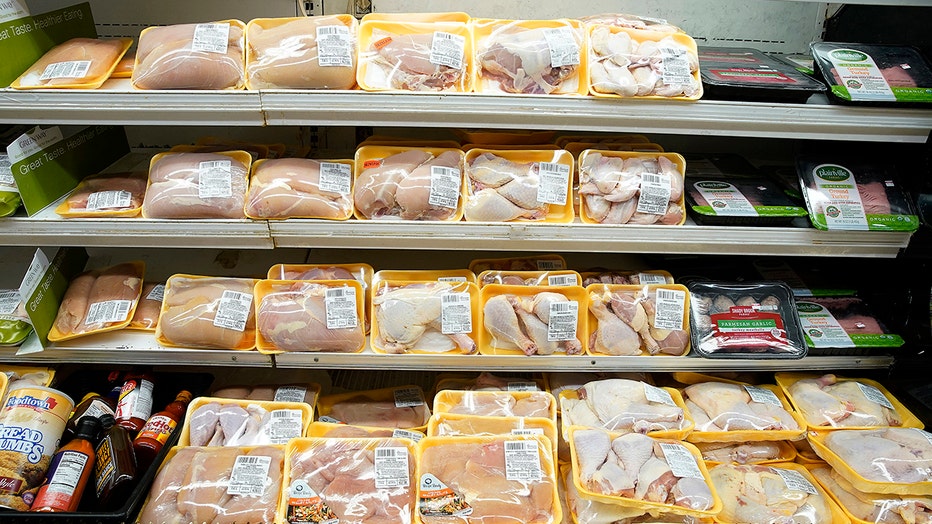USDA withdraws plan to limit salmonella levels in raw poultry: What to know
What is salmonella infection?
People with salmonella infection often suffer diarrhea, fever, and stomach cramps after getting in contact with infected animals, their feces, or their environment or eating contaminated food or drinking contaminated water.
WASHINGTON - The U.S. Department of Agriculture will not require poultry companies to limit salmonella bacteria in their products, stopping a Biden Administration effort to prevent food poisoning from contaminated meat.
The department made the announcement on Thursday about the withdrawal of the proposed rule, which was first announced last year following three years of development.
Here’s what to know:
USDA withdraws proposed salmonella rule
What we know:
The proposed rule, which was published in August, would have required poultry companies to keep levels of salmonella bacteria under a certain threshold and test for the presence of six strains most associated with illness, including three found in turkey and three in chicken.
If the levels exceeded the standard or any of those strains were found, the poultry couldn’t be sold and would be subject to recall, the proposal had said.
On Thursday, officials with the USDA’s Food Safety and Inspection Service announced the withdrawal of the framework, citing feedback from more than 7,000 public comments. The office noted how they would "evaluate whether it should update" current salmonella regulations.

FILE - Poultry packages are seen in a supermarket refrigerator in New York City. (Photo by John Lamparski/SOPA Images/LightRocket via Getty Images)
By the numbers:
The U.S. Centers for Disease Control and Prevention estimates salmonella causes 1.35 million infections annually, most of them through food, and about 420 deaths. The USDA estimates 125,000 infections from chicken and 43,000 from turkey each year.
What they're saying:
The withdrawal drew praise from the National Chicken Council, an industry trade group, which said the proposed rule was legally unsound, misinterpreted science, would have increased costs and created more food waste, all "with no meaningful impact on public health."
"We remain committed to further reducing salmonella and fully support food safety regulations and policies that are based on sound science," said Ashley Peterson, the group's senior vice president of science and regulatory affairs.
The other side:
Meanwhile, the move prompted criticism from food safety advocates, including Sandra Eskin, a former USDA official who helped draft the plan.
The withdrawal "sends the clear message that the Make America Healthy Again initiative does not care about the thousands of people who get sick from preventable foodborne salmonella infections linked to poultry," Eskin said in a statement.
The backstory:
The USDA took similar action with E. coli bacteria in 1994 after deadly food poisoning outbreaks tied to ground beef, and the number of related foodborne illnesses have fallen by more than 50%.
In the past, the agency didn’t set limits on salmonella levels because there weren’t good enough tools and technology to track the bacteria in this way, experts said.
What's next:
Earlier this month, the USDA said it would delay by six months the enforcement of a final rule regulating salmonella levels in certain breaded and stuffed raw chicken products. Enforcement, which was set for May 1, now begins Nov. 3.
That covers foods such as frozen chicken cordon bleu and chicken Kiev dishes that appear to be fully cooked but are only heat-treated to set the batter or coating. Such products have been linked to at least 14 salmonella outbreaks and at least 200 illnesses since 1998, according to the CDC.
The Source: This story was reported citing information published on April 24, 2025, by the USDA’s Food Safety and Inspection Service. It was reported from Cincinnati, and the Associated Press contributed.

